Achu Soup (Yellow Soup) & Achu
Achu Soup (Yellow Soup) & Achu – gloriously yellow, delicate soup prepared mostly in Cameroonian home cooking and fairly common in the Western and North West province. It is always paired with mashed/pounded achu coco (taro).
If you have been looking for a recipe for Achu soup also known as (Yellow soup ) sauce jaune – here you go…
This has been on my blog to do list forever, but kept putting it off for one reason or another until now. I am starting the New Year with this one- a hometown favorite!
This gloriously yellow, delicate soup can be superb or catastrophic, depending on whether you carry out certain essential points. Traditionally it is made with a collision and fusion of beef or chicken broth, red oil, limestone and a variation of spices.
To be honest, most of the spices I really cannot identify by name. They are always grouped together –sold as achu spice. That’s how I buy them.
The modern version of this soup is ridiculously easy to make .The liquid fusion can be accomplished using a blender –giving it an added dimension of smoothness; in less than 2 minutes you are done. How cool is that?
This dish is typical of Cameroonian home cooking, fairly common in the Western and North West province. It is always paired with mashed/pounded achu coco (taro). Here ,I used the food processor to blend the achu coco. If you have a mortar and pestle and desire a smooth consistency and perfect texture, then by all means use it! For mortals like us, this is as good as it gets.
Before you pound away … here is a question for you. Is Ok to eat Achu soup with a spoon? Yes or No?
Watch How to Make It
[adthrive-in-post-video-player video-id=”uw0VjiwK” upload-date=”2021-03-20T07:00:00.000Z” name=”Achu Soup (Yellow Soup) & Achu” description=”Achu Soup (Yellow Soup) & Achu – gloriously yellow, delicate soup prepared mostly in Cameroonian home cooking and fairly common in the Western and North West province. It is always paired with mashed/pounded achu coco (taro).” player-type=”collapse” override-embed=”false”]
Warm oil to get it into liquid form( you may do so on the stove or in a microwave)
Crush limestone using a rolling pin or just purchase the ground one.
Boil meat until tender ( depends on type of meat used ). For a more flavorful achu soup include smoked fish. Remove meat and reserve broth. Let it cool.
Place broth in the blender together with achu spice, oil, limestone and palm oil
Like this! Pulse several times
To get this consistency
Adjust for salt and maggie
Voila achu soup- you may add the meat at the point or serve with meat on the side.
Boil taro until tender( about 45 minutes). Drain water and let it dry out.
Carefully peel away the skin using a knife(sometimes they come off easily without a knife). Cut in medium pieces
Puree taro( cocoyams ) in a food processor into a fine consistency ( do not use any water)
Wrap in plastic paper -serve warm

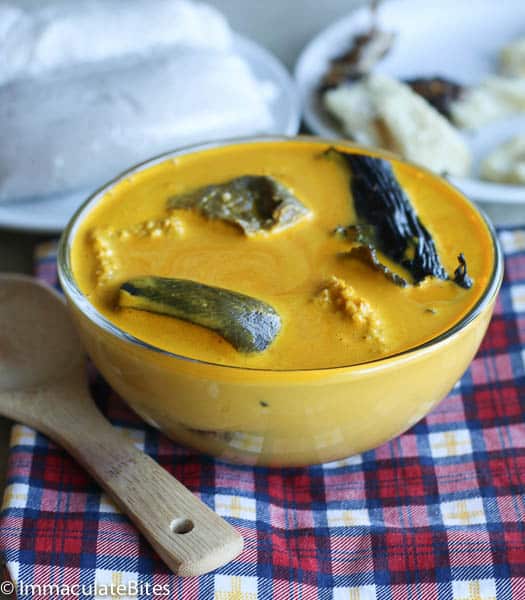
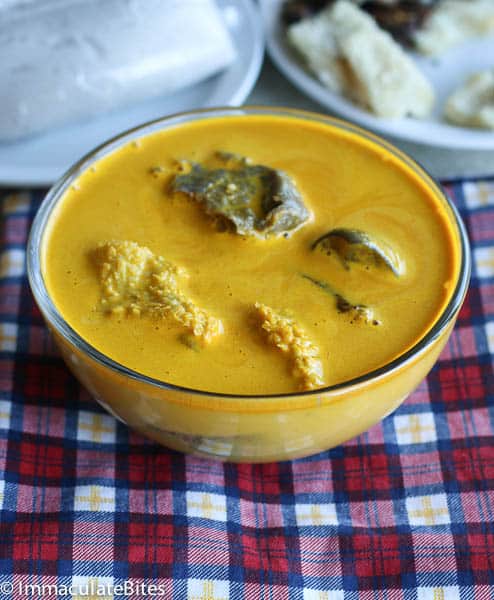
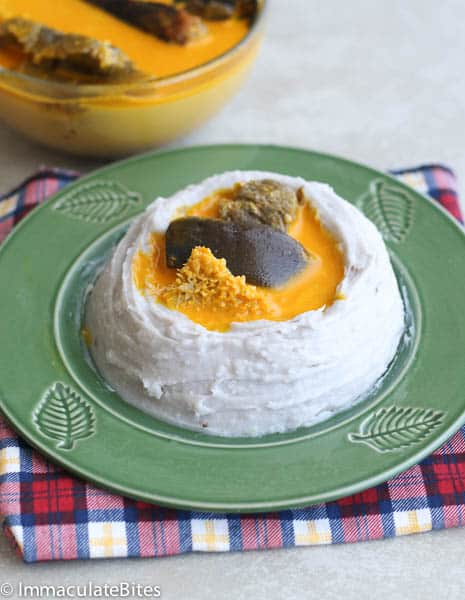
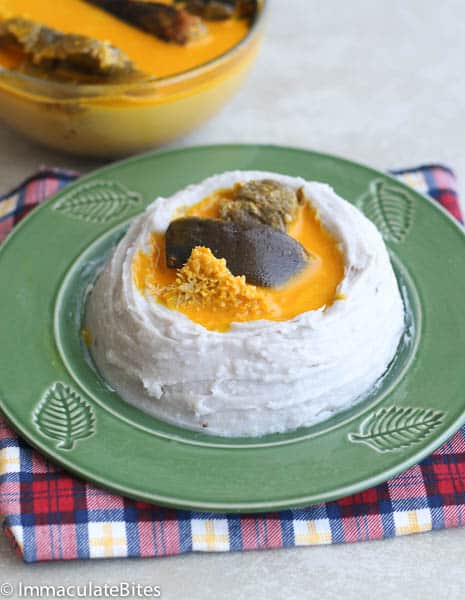
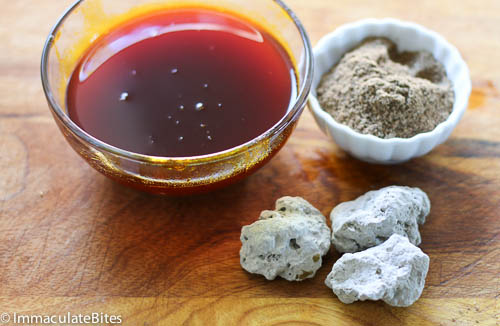
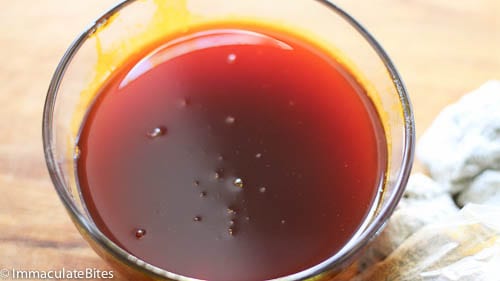
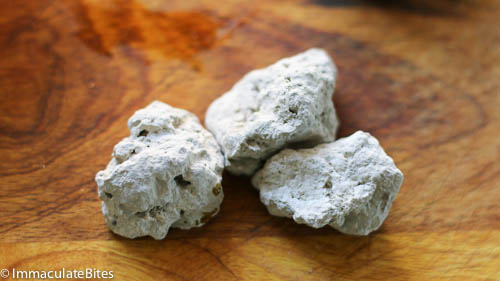
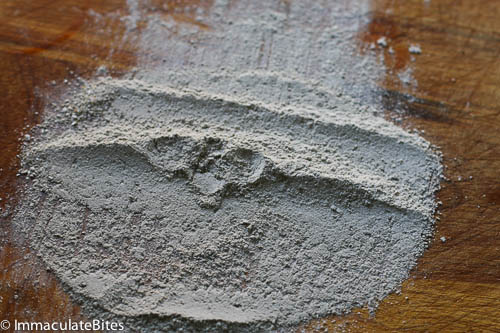
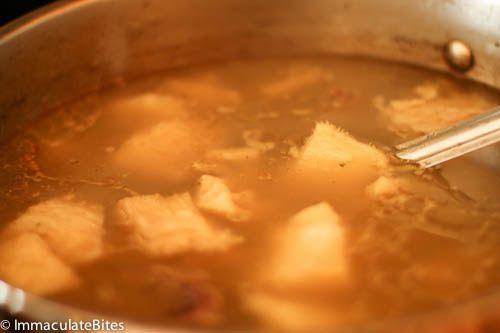

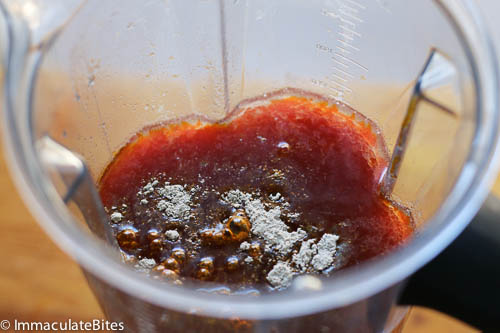
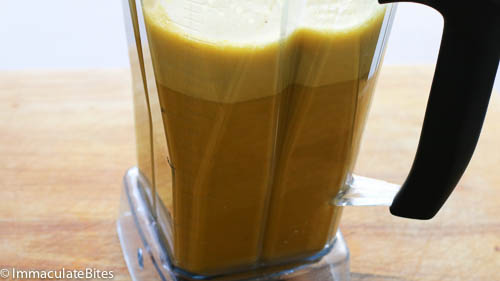
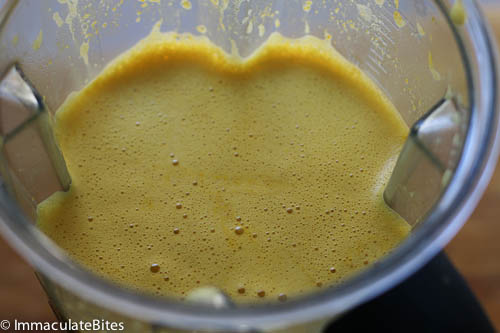

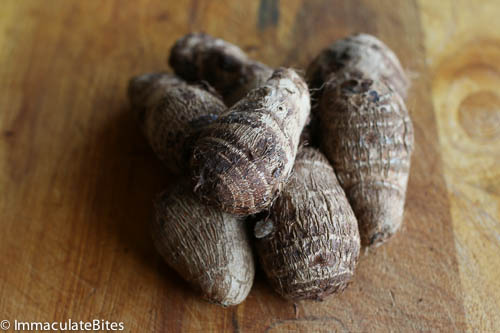
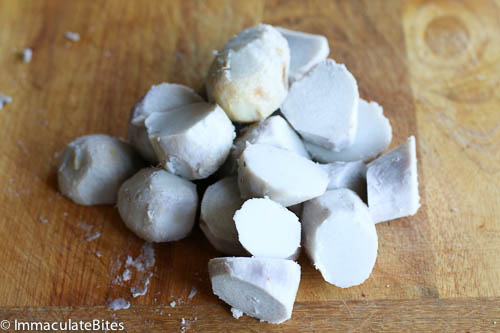
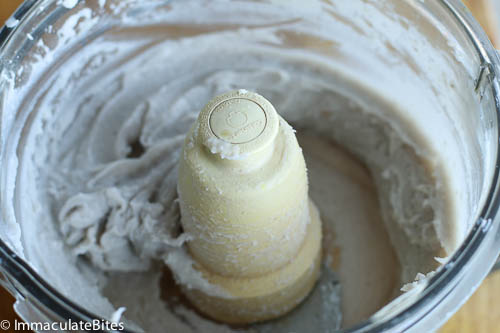
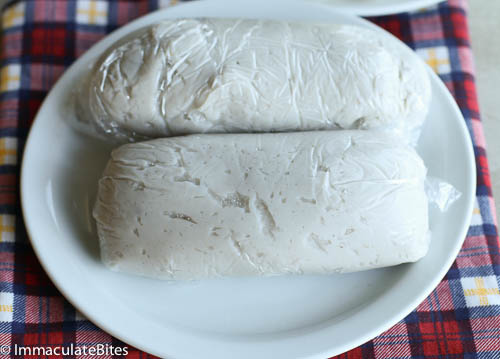


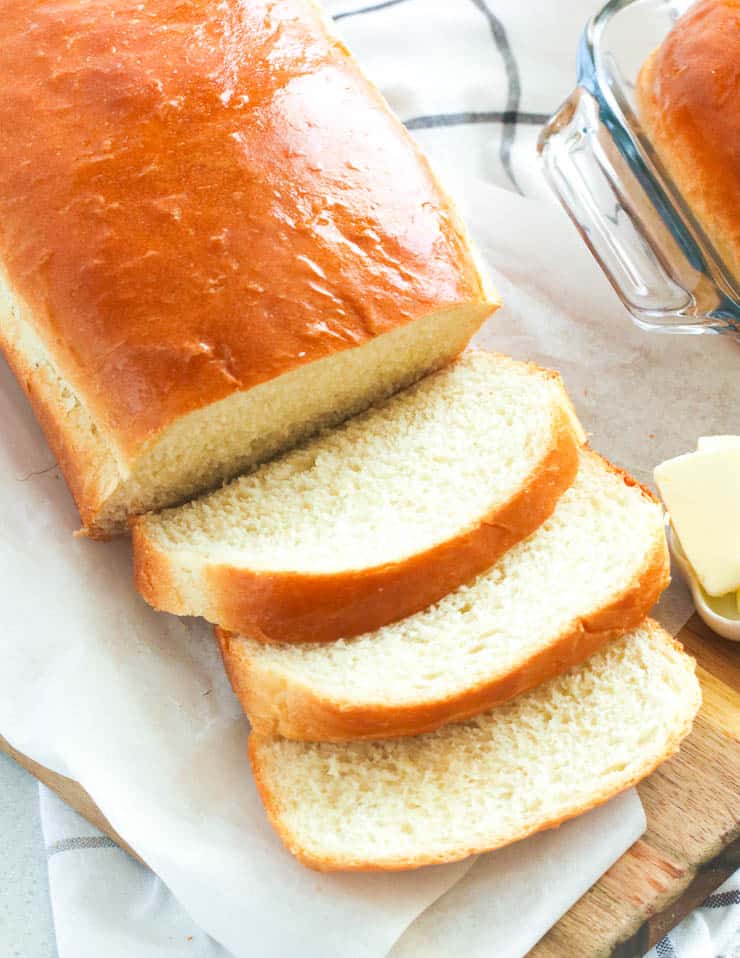

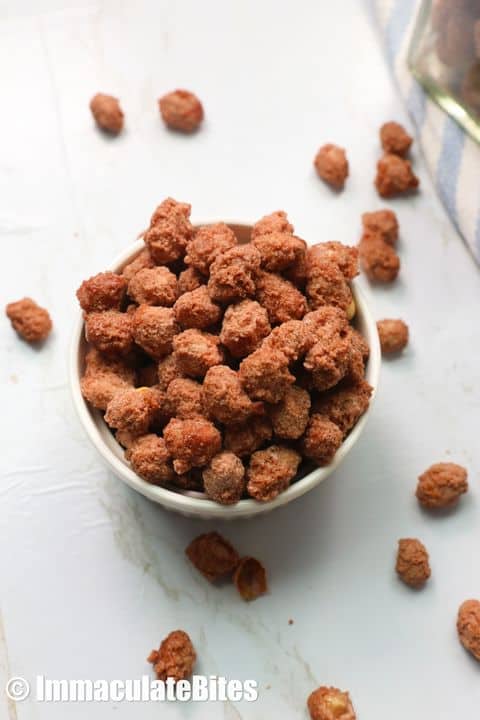

Thank you!! Very easy to follow! My first attempt at Achu and yellow soup, My husband approves only thing is my soup isn’t that yellow (more of a dark yellow / brown) and I think a bit too watery, the oil seems to not have mixed into the stock enough? What can I do better next time? Any tips? X
Thanks for trying the recipe. Sometimes I emulsify it with an immersion blender. That should also lighten up the color.
Thanks for the recipe.i did mine but it was a little bit bitter even after seasoning with salt and maggi.Am I missing anything?
I’m so sorry that happened. I honestly don’t know why it would be bitter. How does your palm (red) oil taste? Sometimes oil gets bitter.
I make this dish often, but I would like to know how to warm achy left over. Thank you!
You can reheat it in the microwave, Esther. 🙂
Thank you!!!! I have loved Achu from childhood but never known how to make it. Now I can! Yay!!!!
Question: is there a way to make the soup thicker? I tend to think mine is too watery…
So happy to hear this . Add a tablespoon or so of the pounded cocoyams to thickened it
Thanks Imma!. Your recipe is perfect!
This is my first time making achu soup-it came out delicious. It’s my first time making the cocoyam in the blender. I have assisted in the pounding before, but it is a serious workout:-) So I decided to try the blender today. It came out perfect.
My aunt(the achu expert in the family) will be very surpised when she comes home to my achu this evening.
My children will be happy with lunch today. Pleasant surprises all around. Thanks again for the recipe!
Hi Larissa!
Thank you, Glad it worked out well .I really appreciate you taking time out to share your thoughts with us . Happy Holidays
I discovered a lovely shop within walking distance that has achu spice. I love taro so this recipe really spoke to me. The flavors warm you soul. I’m making for friends tomorrow!
Do let us know how it works for you. Thanks for sharing your thoughts.
Thank you so much for the information provided. I have always wondered how Achu is prepared. Please, can you help with listing out the Achu spices? I do not have any Cameroonian food shop around and I will really like to know the spices to get from my local market. Thanks again.
Hi Precious! So glad to have you here!
The achu species are many and sometimes varied. Truth is I know their traditional names, but this may be unfamiliar to many vendors. Your best bet would be to have the Achu Spice mix.
Thank you very much for taking the mystery ot of this thingfthing for me. First time making yellow soup and it was 100% dope. Its one of my fav dishes and I’ll probably be making it every Sunday. Way easier that I thought.
Awesome! I’m so glad you’ll be making it again. Thank you for taking the time to let me know. Enjoy!
hi Imma thanks for this recipe i will most definitely try it tomorrow thanks
Awesome! Do let me know how it works out for you. Thanks !
Can I use a pot to pound the coco yam ?
If that’s what you have, go for it . Hope it goes well once you try it please share your experience.
Thanks for this. But please I have a worry, what is the role of the local species of bananas added to the cocoayam by some Cameroonians?
It helps to give the coco yams a soft and smooth texture.
What happens if you peel your cocoyams before boiling?
Hi Annick. Peeling the cocoyams might end up with mushy cocoyams. Leaving the peeling on ensures that it is soft but not too wet. Hope this helps :)!
This was of great help. I am in the US and can’t seem to find limestone. Would you have a suggestion of what company packages it or where to find it?
B
Check out this market here . They do carry it http://tropicalfoodinc.com
I need to find limestone. Where can I?
Hi Fannie! Check out this market here . They do carry it http://tropicalfoodinc.com
Thanks, but could you also give us the nutritive value of thus wonderful dish?
Ill do my best to do a nutritional analysis on this.
I love this dish do much but fear sometimes think I can’t make it. With this briefing I now believe I can do it. More grace to you
Can’t wait for you to try this, Mira. Please do let me know how it works for you.
Hello Immaculate!
My wife (western Cameroonian) and me (German) are discussing about the function of the limestone in this soup. Please, could you tell me, what does the limestone do in this dish? What happens, if there is no limestone used?
Yours thankfully
Andreas
Hi Andreas!
I hear you! We’ve have had many discussions centered around this soup and limestone before . Limestone stone helps in emulsifying the broth and oil. You can’t blend water and oil together without some sort of chemical to keep it together.
And that’s the role of limestone. It helps break down the the oil and broth together to form the yellowish color, inherent in achu soup.
Hope this helps.
That’s why at my restaurant I use (Nikki. Plantain peels) rather than limestone.